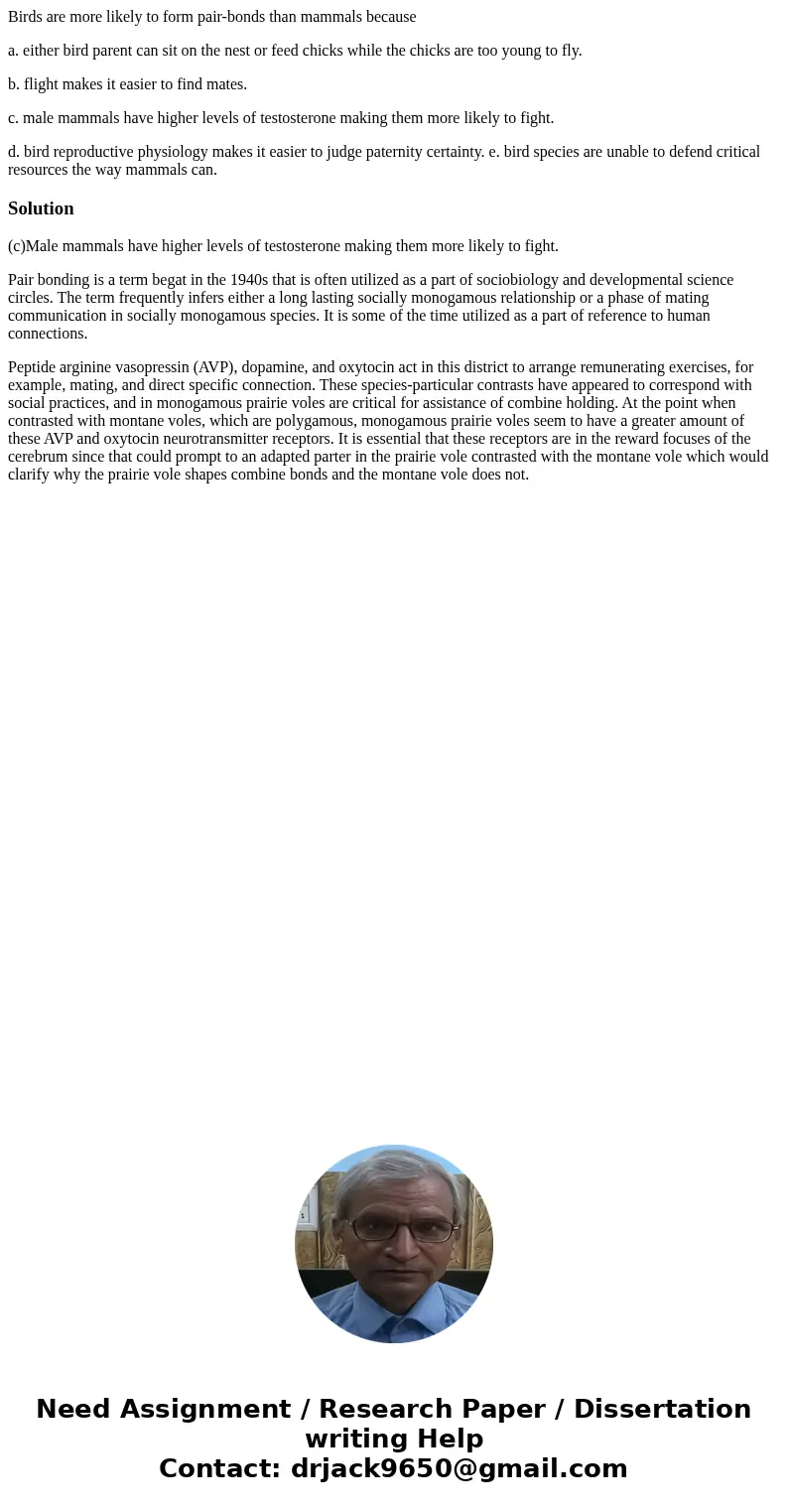Birds are more likely to form pairbonds than mammals because
Birds are more likely to form pair-bonds than mammals because
a. either bird parent can sit on the nest or feed chicks while the chicks are too young to fly.
b. flight makes it easier to find mates.
c. male mammals have higher levels of testosterone making them more likely to fight.
d. bird reproductive physiology makes it easier to judge paternity certainty. e. bird species are unable to defend critical resources the way mammals can.
Solution
(c)Male mammals have higher levels of testosterone making them more likely to fight.
Pair bonding is a term begat in the 1940s that is often utilized as a part of sociobiology and developmental science circles. The term frequently infers either a long lasting socially monogamous relationship or a phase of mating communication in socially monogamous species. It is some of the time utilized as a part of reference to human connections.
Peptide arginine vasopressin (AVP), dopamine, and oxytocin act in this district to arrange remunerating exercises, for example, mating, and direct specific connection. These species-particular contrasts have appeared to correspond with social practices, and in monogamous prairie voles are critical for assistance of combine holding. At the point when contrasted with montane voles, which are polygamous, monogamous prairie voles seem to have a greater amount of these AVP and oxytocin neurotransmitter receptors. It is essential that these receptors are in the reward focuses of the cerebrum since that could prompt to an adapted parter in the prairie vole contrasted with the montane vole which would clarify why the prairie vole shapes combine bonds and the montane vole does not.

 Homework Sourse
Homework Sourse